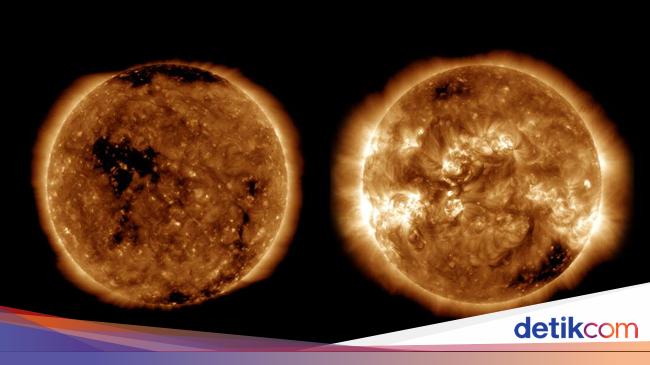Jakarta –
Recent studies of how stars form, add to the hypothesis that most (if not all) star born with at least one sibling.
our own star, Sun, at the center of the Solar System, may be no exception. Some astronomers even suspect that our Sun’s twin may have been the cause of the dinosaurs’ demise.
After analyzing data from radio surveys conducted on dust clouds in the constellation Perseus, two researchers from UC Berkeley and the Harvard-Smithsonian Astrophysical Observatory concluded in 2017 that all Sun-like stars may have been born with companions or twins.
“We ran a series of statistical models to see if we could explain the relative populations of young single and binary stars of all splits in the Perseus molecular cloud, and the only model that could reproduce the data was a model in which all stars formed initially as wide binaries.” said UC Berkeley astronomer Steven Stahler in June 2017.
For years, astronomers have wondered whether the large number of binary and triple star systems in our galaxy were created close to each other, or whether they fell together after forming.
The “born together” hypothesis is becoming the favourite, and simulations developed in recent decades have shown almost all star can be born as multiples that often rotate on their own.
Quoted from Science Alert, Sunday (12/12/2021) the empirical evidence to support this simulation is limited, which makes this new work somewhat interesting.
“Our work is a step forward in understanding how binaries form and also the role that binaries played in early stellar evolution,” said Stahler.
As part of the nascent disk and VLA multiplicity survey (VANDAM for short), the researchers mapped radio waves emitting from a dense dust cocoon some 600 light-years away that contains the entire nursery of young stars.
The VANDAM survey allowed a census of stars younger than half a million years called Class 0 stars (meaning babies in stellar terms) and stars slightly older between 500,000 years and 1 million years, called Class 1.
Combined with data about the shape of the surrounding dust cloud, the scientists found 45 lonely stars, 19 binary star systems, and five more containing more than two star.
While their results predict all stars are born as binary, they changed their conclusion to account for limitations in their model by saying that most stars that form in dense cores of dust clouds are born in pairs.
“I think we have the strongest evidence to date for such a statement,” Stahler said at the time.
Looking closely at the distances between the stars, the researchers found all the binaries separated by gaps of 500 AU or more were Class 0 and lined up with the axis of the egg-shaped cloud surrounding them.
Class 1 stars, on the other hand, tend to be closer to each other at about 200 AU and not parallel to their ‘egg’ axis.
“We don’t know exactly what that means yet, but it’s not random and should say something about the way wide binaries form,” said Sarah Sadavoy of the Harvard-Smithsonian Astrophysical Observatory.
Nemesis
If most stars are born with a partner, where is the partner Sun we? Researchers say, at a distance of 500 AU is approximately 0.008 light years, or a little under 3 light days.
To illustrate, Neptune is about 30 AU away, the Voyager 1 probe is currently just under 140 AU, and the closest known star Proxima Centauri is 268,770 AU.
So if the Sun has a twin, it’s almost certainly not easily visible in our environment. But it’s hypothesized that our Sun has a twin who likes to pop in every now and then, and ruffles.
Nicknamed Nemesis, the Sun’s twin nicknamed ‘the troublemaker’ has been suggested as the reason behind Earth’s 27 million-year cycle of extinction, including the cycle that wiped out most of the dinosaurs.
An astronomer from the University of California Berkeley named Richard Muller proposed 23 years ago that a red dwarf star 1.5 light years away could periodically travel through the icy outer boundary of our Solar System, stirring matter with its gravity.
A passing faint star could also explain other anomalies in the periphery of our Solar System, such as the strange and wide orbit of the dwarf planet Sedna.
No sign of Nemesis, but a long lost binary pair for Sun we can fulfill it.
“We said, yes, there might be a Nemesis, but a long time ago,” said Stahler.
In this case, our Sun appears to have accumulated the lion’s share of dust and gas, leaving behind its dark, dwarf twin.
Watch Videos “When Did The Stars Shine For The First Time?“
[Gambas:Video 20detik]
(rns/fay)
– .


